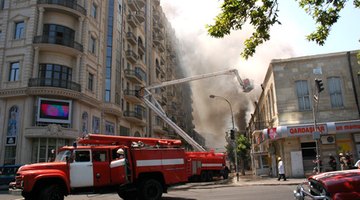Disaster management refers to the policies, programs, administrative actions and operations undertaken to address a natural or man-made disaster through preparedness, mitigation, response and recovery. Although the actions taken to address a specific disaster vary depending on the hazard, four objectives of disaster management apply to every situation.
Reduce Damages and Deaths
Effective disaster management reduces or avoids morbidity, mortality, and economic and physical damages from a hazard. The methods used to achieve this include hazard and vulnerability analysis, preparedness, mitigation and prevention measures, and the use of predictive and warning systems. Examples of effective disaster management techniques include completing risk assessments, building community storm shelters and installing community outdoor siren systems.
Reduce Personal Suffering
Disaster management reduces personal suffering, such as morbidity and emotional stress following a hazard. The methods used to prevent suffering include hazard and vulnerability analysis, preparedness, and mitigation and prevention measures. Examples of efforts to reduce personal suffering include providing safe food supplies and potable drinking water when water supplies become contaminated.
Speed Recovery
The third objective is to speed recovery. The methods to accomplish this objective include effective response mechanisms and the institution of recovery programs and assistance. Examples of efforts to speed recovery include providing paperwork assistance for insurance claims, and grant or loan applications.
Protect Victims
Disaster management provides protection to victims and/or displaced persons. Facilities utilize preparedness, response mechanisms, recovery programs and assistance to address shelter needs and provide protective services.
Related Articles
References
Writer Bio
Carlie Lawson is a hazards consultant, writer, and model living in Oklahoma. Her articles have appeared in "Keysian," "Movitly," "Weather and Society Watch," "Journal of Regional Studies," "Oklahoma College Press," and "JollyJo.tv." She holds Bachelor of Arts degrees in journalism and mass communications, and in film and video studies, and a Master of Regional and City Planning from the University of Oklahoma.









